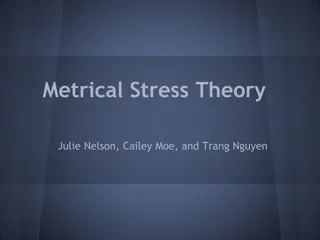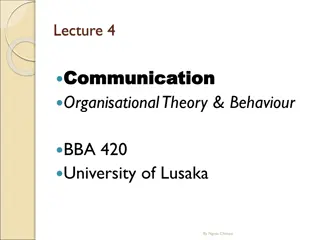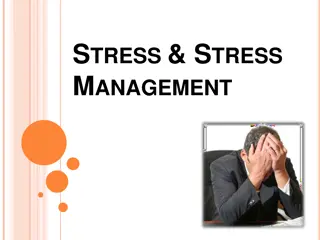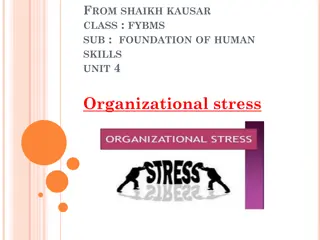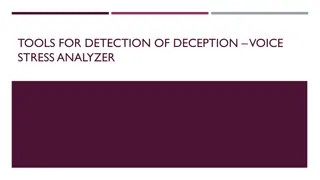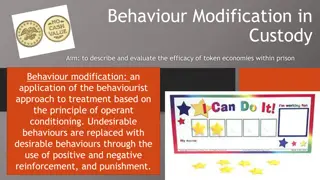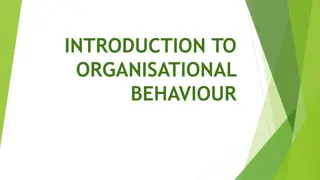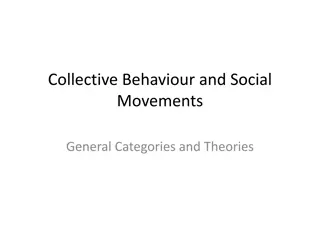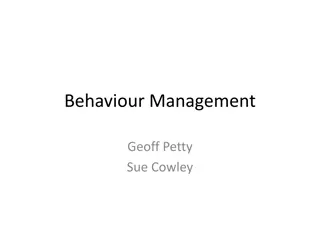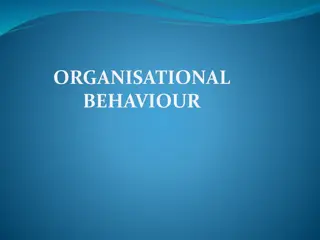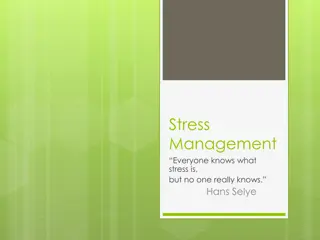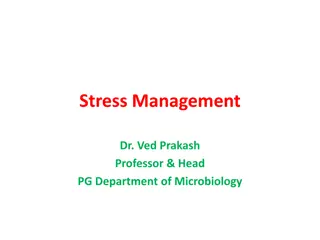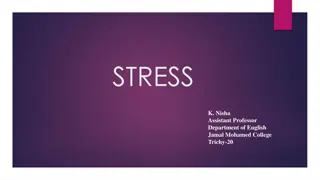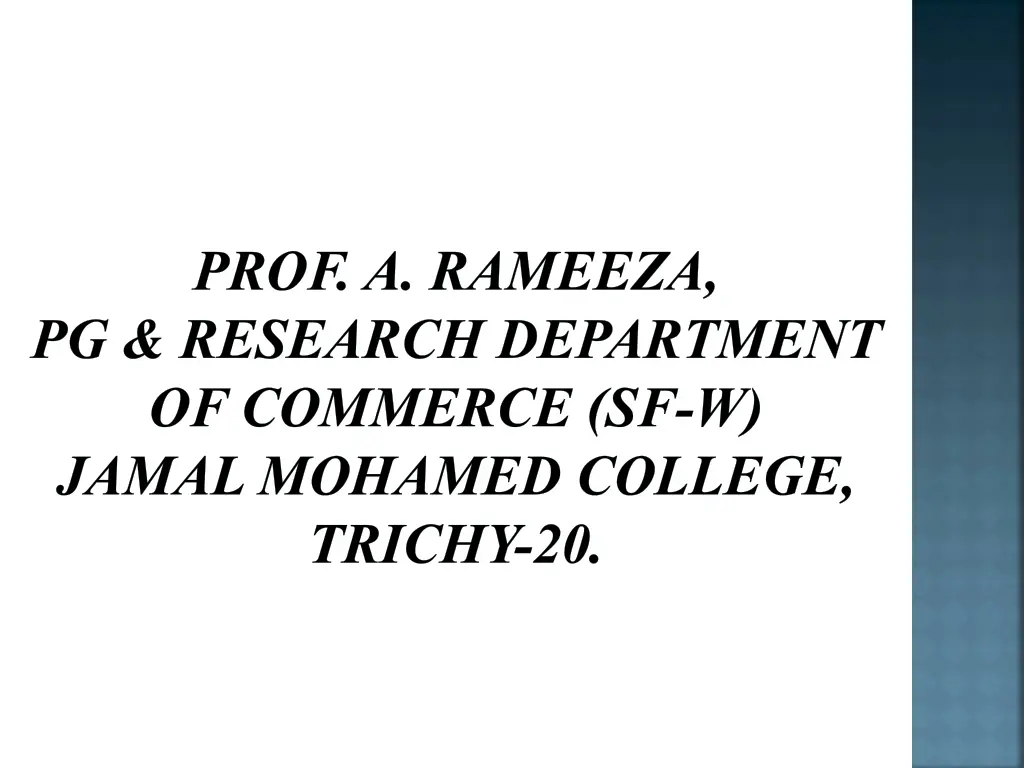
Understanding Different Types and Symptoms of Stress
Learn about the various types of stress such as acute, chronic, and eustress, along with common symptoms like mood changes, digestive problems, and muscle tension. Stress can have both negative and positive effects on individuals, and it is important to recognize and manage its impact on mental and physical health.
Download Presentation

Please find below an Image/Link to download the presentation.
The content on the website is provided AS IS for your information and personal use only. It may not be sold, licensed, or shared on other websites without obtaining consent from the author. If you encounter any issues during the download, it is possible that the publisher has removed the file from their server.
You are allowed to download the files provided on this website for personal or commercial use, subject to the condition that they are used lawfully. All files are the property of their respective owners.
The content on the website is provided AS IS for your information and personal use only. It may not be sold, licensed, or shared on other websites without obtaining consent from the author.
E N D
Presentation Transcript
PROF. A. RAMEEZA, PG & RESEARCH DEPARTMENT OF COMMERCE (SF-W) JAMAL MOHAMED COLLEGE, TRICHY-20.
Stress can come from any event or thought that makes you feel frustrated, angry, or nervous. Stress is a feeling of emotional or physical tension. It
Features of Stress Stress is both psychological and physical aspect. It is common to both the genders. It results from the deviation of expectations from actual situation. It is symptomatic. Potential stress appears with the symptoms. If the potential stress is ignored it leads to actual stress. Stress is treated to be negative. Nevertheless, it has positive consequences. This is called as eustress. Stress is an interactive concept. It does not spring from the internal organs of the individual. It comes from the interaction of the human being with the environment. Thus, environment has a profound influence on the stress. Stress is generic term. If it is applied to the context of organisation, it is known as work stress or job stress. Stress occurs only when the human being feels mediation of the internal or external factors. Stress is related to the attitude of the person. Stress does not occur when the person is having an indifferent attitude to the opportunity. Stress is associated with certain common biological disorders such as heart attack, stroke, diabetic, blood pressure, neurological disorders etc.
Some common signs of stress include: Changes in mood Clammy or sweaty palms Decreased sex drive Diarrhea Difficulty sleeping Digestive problems Dizziness Feeling anxious Frequent sickness Grinding teeth Headaches Low energy Muscle tension, especially in the neck and shoulders Physical aches and pains Racing heartbeat Trembling
Types of Stress negative. Some of the different types of stress that you might experience include: Not all types of stress are harmful or even Acute stress Chronic stress Episodic acute stress Eustress
Acute stress: that can either be positive or more distressing; this is the type of stress we most often encounter in day-to-day life. Acute stress is a very short-term type of stress Chronic stress: Chronic stress is stress that seems never-ending and inescapable, like the stress of a bad marriage or an extremely taxing job; chronic stress can also stem from traumatic experiences and childhood trauma.
Episodic acute stress: rampant and be a way of life, creating a life of ongoing distress. Episodic acute stress is acute stress that seems to run Eustress: type of stress that can keep you energized. It's associated with surges of adrenaline, such as when you are skiing or racing to meet a deadline. Eustress is fun and exciting. It's known as a positive
Stress management Stress management is defined as the tools, strategies, or techniques that reduce stress and reduce the negative impacts stress has on your mental or physical well-being. stress. These include mental, emotional, and behavioural strategies. A variety of techniques can be used to manage


